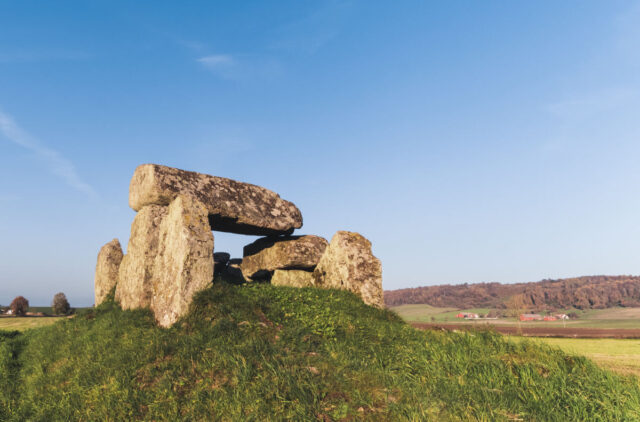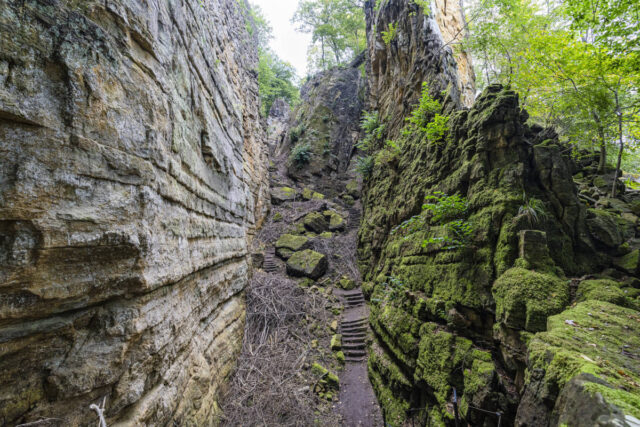Sweden in north Europe and Luxembourg in west Europe are two new countries that have managed to get one of their regions designated as a Unesco Global Geopark. Since 2004, Unesco has annually evaluated a number of regions around the world for exceptional geoglogical and cultural values. In 2022, 8 new Geoparks were designated. Here are the new sites that are fascinating travel destinations as well.
Unesco Global Geoparks Network consists of 177 sites in 46 countries in 2022. A Geopark is a unified geographical area whose landscape has international geological significance. The park is managed with protection, education and sustainable development in mind. Conservation efforts and sustainable development with local communities is a core requirement for becoming a Geopark.
The new Geoparks designated in 2022 are the following.
Platåbergen, Sweden

Platåbergen (Table Mountain) is a region in western Sweden located northeast from the city of Gothenburg (Göteborg) and the beautiful West Coast. The large Geopark region in southwest Sweden features 15 flat-topped mountains, forests, lakes, and is a home for nearly 300,000 Swedes. The mountains are a result of the last Ice Age 115,000 years ago when ice moved to the south and flattened mountains in all Nordic countries. Humans have inhabited the region since 5300 BCE. During the Viking era, the first Christian church made of stone was built in the region.
Mëllerdall, Luxembourg

Mëllerdall Geopark is located northeast from the capital Luxembourg. The town of Mullerthal is the central place for the park. The spectacular sandstone landscape has been a tourist attraction since the late 19th century, but the formations date from the Lower Liassic age, 205 to 180 million years ago. The key attraction, in addition to the sandstone, is a network of signposted hiking trails, the most renowned and awarded is the 112 km long Mullerthal trail.
Salpausselkä, Finland

Salpausselkä is 600 km long chain of ridges that stretches from west to east in southern Finland, about 100 km north from the capital Helsinki. In the town of Lahti, the landscape of the ridge is particularly spectacular and this is where the name Salpausselkä comes from. Ridges outside Lahti have different names. The Salpausselkä Geopark region consists of lakes and forests (and ridges, of course). The landscape was created by melting glaciers when the ice retreated to the north after the last Ice Age. All friends of Nordic winter sports know Salpausselkä from its cross-country ski and ski-jump competitions, and during summer from hiking and mountain biking routes.
Ries, Germany
The Ries Geopark can be visited in the southernmost state of Germany, Bavaria. The region is located northeast of Munich. The key attraction in the region is the Ries crater, created by a meteorite that collided with Earth about 15 million years ago. Nature trails lead hikers to scenic locations in the park.
Kefalonia-Ithaca, Greece
Kefalonia–Ithaca Geopark is an archipelago in western Greece, rich in geosites of karstic origin such as caves, sinkholes and underground streams. It is the most tectonically active region in Europe. The islands have been settled for ages, making it home to prehistoric Hellenistic and Roman monuments, medieval castles, Byzantine and post-Byzantine monasteries.
Buzău Land, Romania
The hilly and mountainous territory of the Buzău Land Geopark can be visited in the Carpathian Bend Area in Romania. During its 40 million years of geological history, tectonic movements pushed up mountains and transformed a deep-sea environment into a terrestrial one. Fossils of marine species, terrestrial vegetation, mammals and birds dating from the last glaciation have been well-preserved in the Carpathians.
Seridó, Brazil
The Seridó Geopark is located in northeast of Brazil. The region shelters a large scheelite mineralization, an important tungsten ore, as well as basalt flows that stem from volcanic activity during the Mesozoic and Cenozoic Eras. This geodiversity determinesthe region’s unique biodiversity, especially characterized by ‘white forest’, an ecoregion marked by specific subtropical flora. Its biological heritage cannot be found anywhere else on the planet.
Southern Canyons Pathways, Brazil
The Caminhos dos Cânions do Sul UNESCO Global Geopark can be explored in southern Brazil. It is characterized by Atlantic Forests, one of the planet’s richest ecosystems in terms of biodiversity. Underground cavities excavated by extinct paleo-vertebrate megafauna, like the giant ground sloth are still visible in the geopark. The site features the most impressive canyons in South America.
